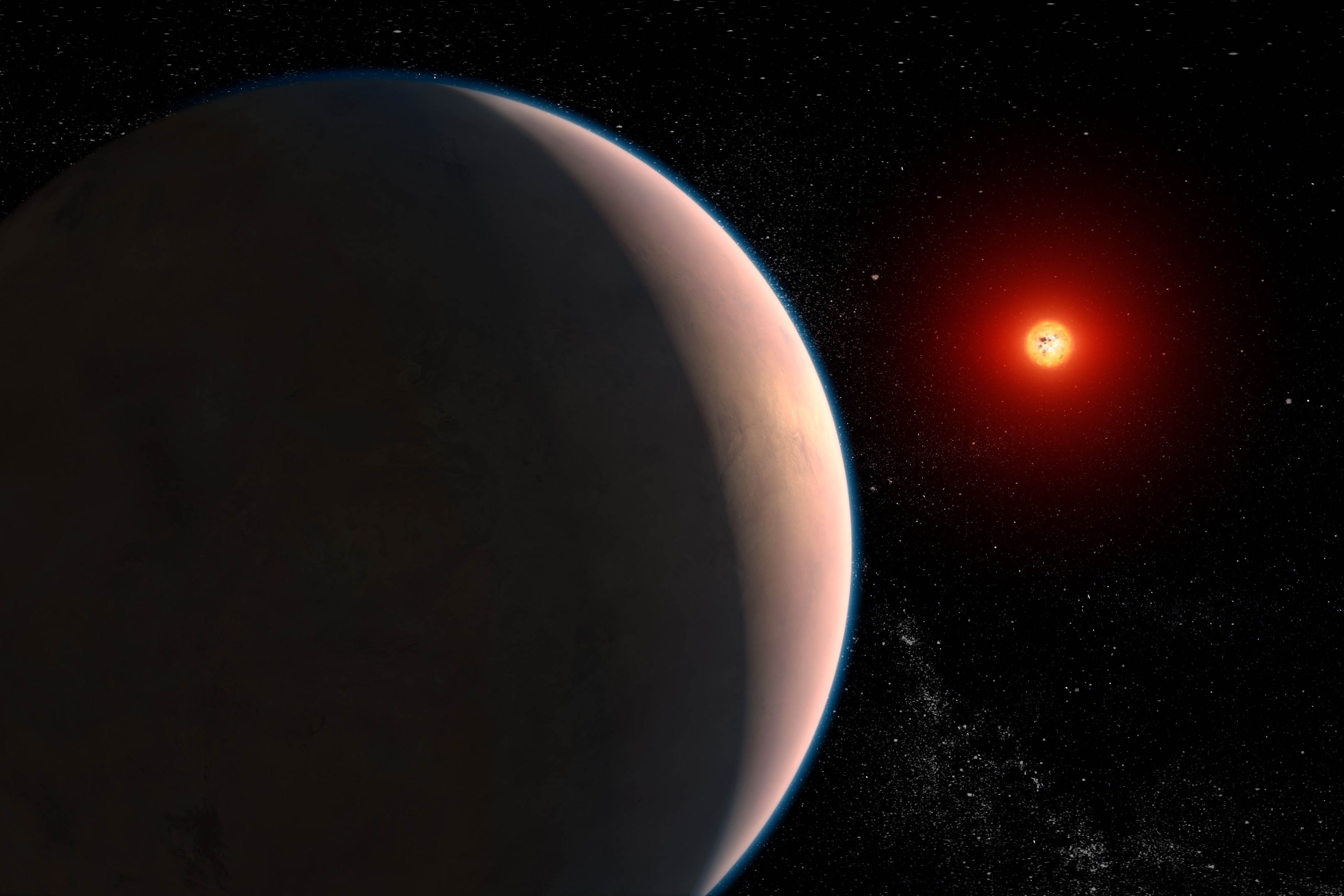
The James Webb Space Telescope (JWST), staring at a rocky planet 26 light-years away, has picked up signs of water vapor. The discovery marks the first time that astronomers have successfully identified the atmosphere of a rocky planet outside our solar system. Finding water vapor in small worlds would also be a big step forward in the search for habitable extraterrestrial planets, as water is essential to life as we know it.
However, there are equally likely explanations for water vapor, creating ambiguity in potential milestone results. Spots of magnetic activity on the planet’s host star may also be a source of water vapor. Further observations using various instruments are required to finally unravel the mystery.
“Just knowing that a rocky planet around another star could have water would be a big deal,” said Ryan McDonald, an astrophysicist at the University of Michigan. At the same time, he says, “in science, it’s good to play a little devil’s advocate,” instead of over-promising results that turn out to be wrong. A preprint paper detailing the analysis of water vapor by McDonald and his colleagues appeared in his May 1st publication, and the study Astrophysics Journal Letter.
The team originally planned to look for traces of carbon dioxide in the atmospheres of rocky planets. The researchers targeted GJ 486 b, a rocky planet orbiting near a red dwarf star in the constellation Virgo. Using the JWST’s Near Infrared Spectrometer (NIRSpec) instrument, they observed planets crossing the surface of their stars, a phenomenon called transits, as seen from Earth. This allowed the team to collect some of the starlight that passed through the planet’s upper atmosphere, assuming the world had an atmosphere. Such light is especially valuable to astronomers because it can carry traces of different molecules in the planet’s atmosphere. For example, water vapor preferentially absorbs certain wavelengths or colors of light. Using light from two passes of GJ 486 b to form a rainbow-like “spectrum” (a technique called transmission spectroscopy), water vapor can be detected by reading its absorption lines, much like barcodes. can reveal the existence of
GJ 486 b has an estimated surface temperature of 800 degrees Fahrenheit, comparable to that of Venus, but certainly not in the range of temperatures considered habitable or Earth-like. Because the planet orbits so close to its star, the planet’s atmosphere could have easily been eroded by stellar flares and other explosions long ago. Given the harsh conditions, study lead author Sarah Moran, a planetary scientist at the University of Arizona, said she was surprised to see signals indicating atmospheric detection. She said, “Compared to the atmospheric model, it was even more surprising. It worked really well with water,” says Moran.
Initially, researchers thought water vapor must be found high in the planet’s atmosphere. “But we immediately took a step back and said, ‘What’s the other explanation?'” Moran says.
One competing scenario arises from the fact that red dwarfs are much smaller, dimmer, and cooler than our Sun. This means that stellar speckles (dark, highly magnetized regions on all stars that are cooler than their surroundings) can be particularly cold and low enough to sustain the formation of water vapor. In 2018, years before JWST’s launch, researchers at the University of Arizona found that patches of red dwarfs could be troubling sources of pollution that could mimic authentic atmospheric signals from accompanying exoplanets. I just realized something. With this in mind, Moran and her colleagues statistically demonstrate how well the atmospheric origin explains or “fits” the water vapor signal compared to a fit from a stellar model that puts the stellar speckles into perspective. calculated to The results yielded nearly identical fit to each scenario. Statistically speaking, if you want to be as certain as an expert about whether water vapor exists on this particular planet, you just need to flip a coin.
Part of the ambiguity is due to the amazing physical properties of water. McDonald says that if the JWST instrument detects a strong signature of the carbon dioxide molecule, it will be unique to Earth. “Water turns out to be an unfortunate molecule that is very stable over a very wide temperature range,” he says.
NIRSpec is sufficient for carbon dioxide detection, but water vapor detection is reaching the limits of the instrument’s capabilities. Unless the observations are made using a variety of instruments covering a wider wavelength range, the conclusions are likely to remain ambiguous, says Moran.
“This is the first year of observations,” McDonald said. “We’re figuring out how to model planets, how to model stars, how to make observations. It’s always going to be a bit of a hassle at first.” He is optimistic that the team is on an upward learning curve to find the best observational strategies to learn more about small planet atmospheres.
If it is true that the water vapor comes from a planet rather than a star, then GJ 486 b has an atmosphere. And if planets with such hot surface temperatures and orbiting dangerously close to their stars can sustain atmospheres, perhaps colder planets in milder orbits offer additional opportunities for habitability. Even if a stellar speck turns out to be the source of the signal, this will give researchers an opportunity to learn more about the magnetic fields and other peculiarities of stellar astrophysics that allow the red dwarf itself to generate water vapor. Yes, Moran says.
“I’m not surprised that the results are ambiguous,” says Jacob Bean, an astrophysicist at the University of Chicago who was not part of the research team. Transmission spectroscopy, he said, is challenged by thin atmospheres, such as those that may surround GJ 486 b. Instead, a technique called thermal ejection could yield less ambiguous results, says Bean. In this approach, astronomers usually directly measure a planet’s infrared glow by watching the world pass behind it and be eclipsed by its star. This allows the thermal signature of the planet to be distinguished from the thermal signature of the star. Blurred thermal emissions across both the illuminated dayside and the dark nightside of the world would suggest some medium, the atmosphere, that carries heat from the falling starlight.
A team led by astronomer Megan Mansfield at the University of Arizona plans to use the JWST to observe the thermal emissions of GJ 486 b in the coming months, which “clarifies the picture a lot,” Bean said. But while thermal radiation could tell us more reliably whether there is an atmosphere around the Earth, it would reveal little about the chemical composition of its potential atmosphere. “We’re still on the edge of comprehension,” Mansfield said. “I think it’s still good to do all these different kinds of measurements.”
Astronomer Kevin Stevenson of Johns Hopkins University agrees that it is important to conduct observations over a much broader range of wavelengths. Getting the best data about small, rocky exoplanets requires more than one type of observation. “I think the combination of transit and eclipse gives us the most information,” he says.
Within the next year or so, astronomers should gather enough data to definitively declare whether GJ 486 b has an atmosphere, Stevenson predicts. “Then, of course, we’ll be able to track more planets and get a better picture of populations as a whole,” he says. “This is really just the beginning.”











